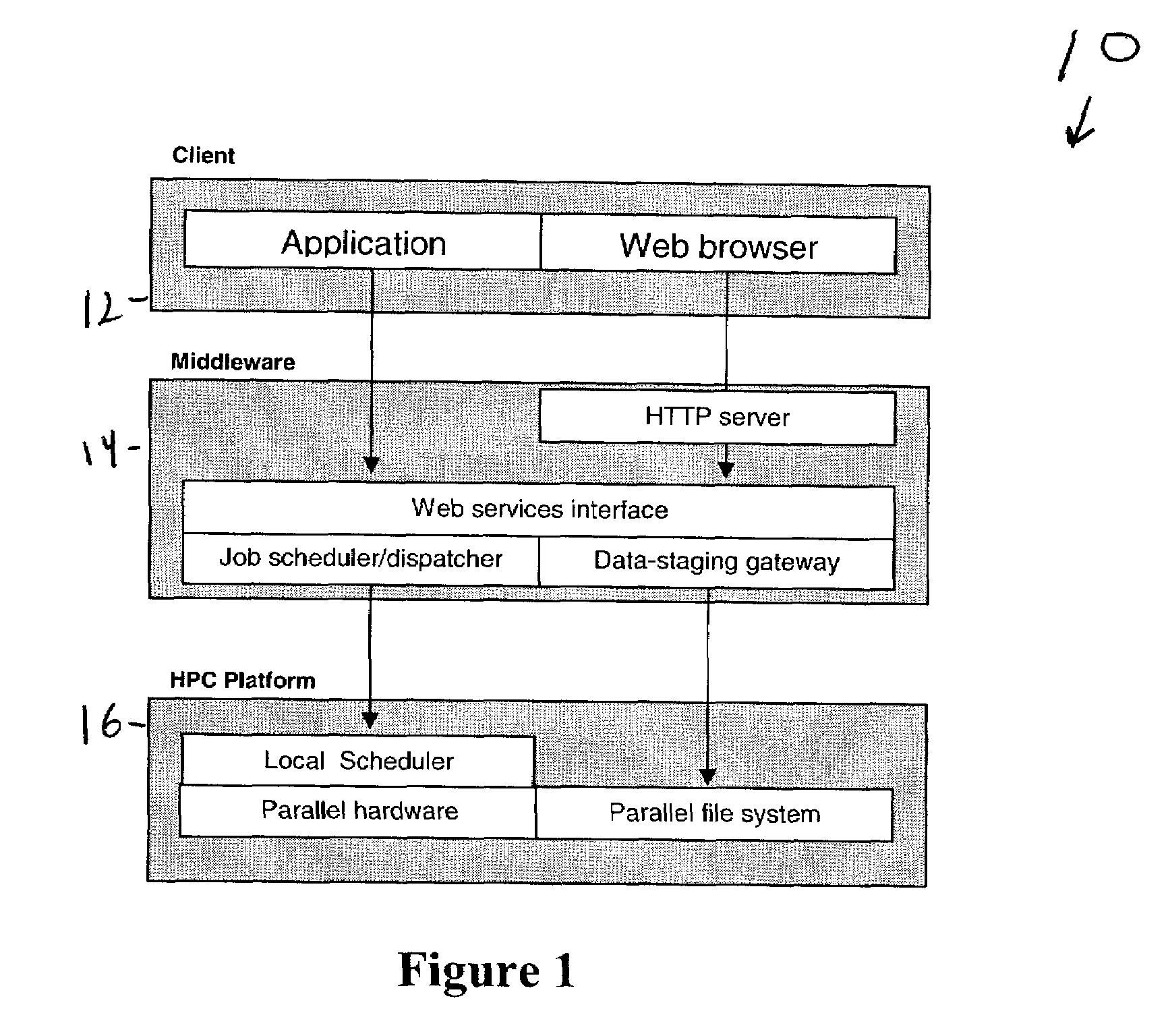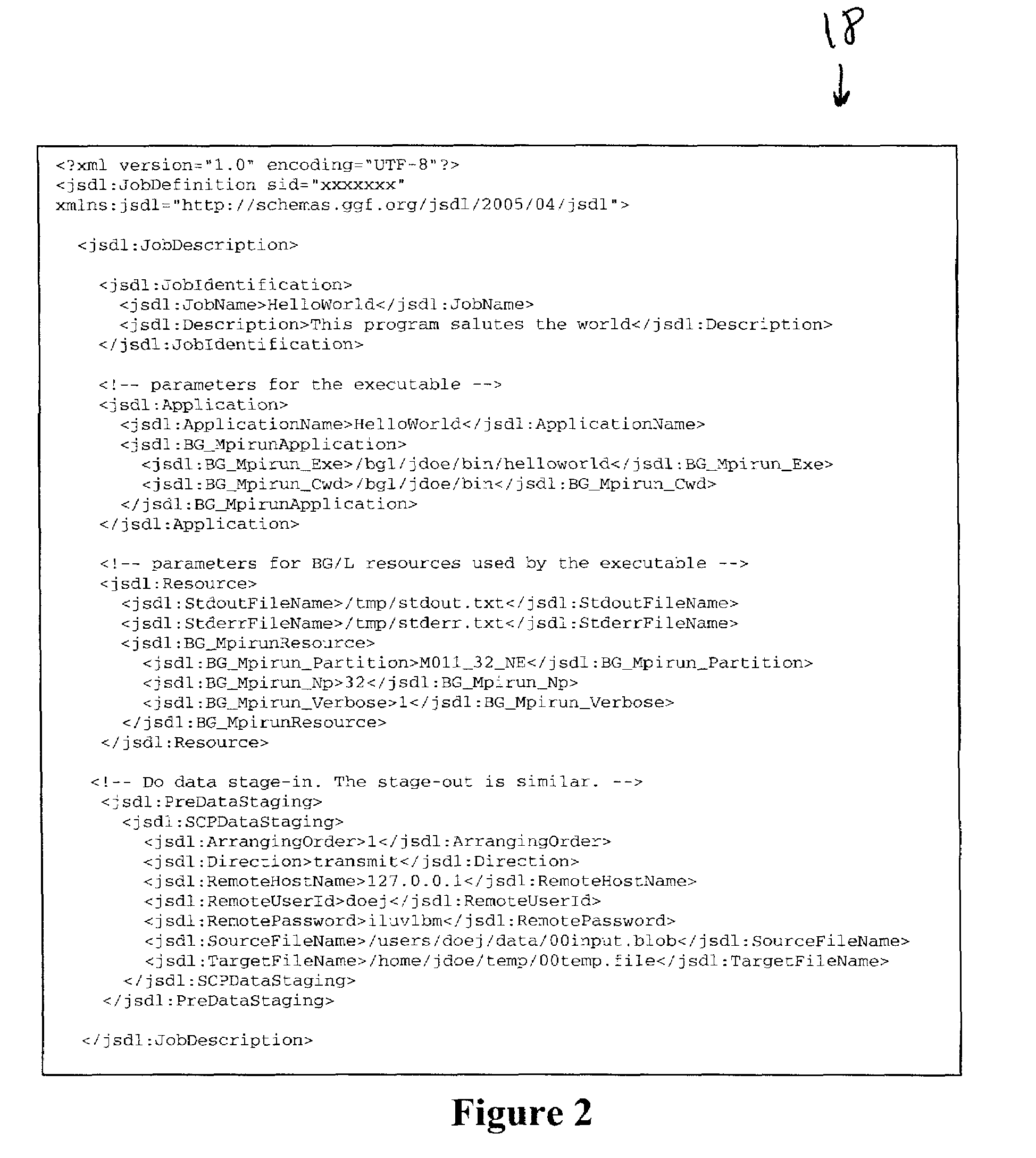System and method for automating and scheduling remote data transfer and computation for high performance computing
a high-performance computing and remote data technology, applied in computing, multi-programming arrangements, instruments, etc., can solve the problems of application runtime, inability to hide the long and unreliable latencies of remote data access, and many hpc platforms are not well-suited for accessing data stored in high-latency external data sources. achieve the effect of optimizing the overall performance of multi-application environments, facilitating application workflow, and facilitating data transfer
- Summary
- Abstract
- Description
- Claims
- Application Information
AI Technical Summary
Benefits of technology
Problems solved by technology
Method used
Image
Examples
Embodiment Construction
[0023]FIG. 1 (numerals 10-16) is a schematic of the logical view of the middleware layer components. From either an application or from a web-browser interface, the client uses an XML-based job submission file, and invokes the middleware through a web services application programming interface (API). This API provides a set of remote methods for job submission and monitoring via the SOAP protocol. When the user submits a job to the middleware, it is placed in a meta-scheduler, and a 32-byte job identifier token is returned to the user, which can be used to query the job status, delete the job from the queue or to kill a running a running job. The current implementation of this meta-scheduler uses a simple FCFS scheduling algorithm for these steps, but can be extended to provide co-scheduling and synchronization the data movement and job dispatching in conjunction with the existing platform-specific scheduling and calendaring systems. The existing HPC schedulers (E. Krevat, J. G. Cas...
PUM
 Login to View More
Login to View More Abstract
Description
Claims
Application Information
 Login to View More
Login to View More - R&D
- Intellectual Property
- Life Sciences
- Materials
- Tech Scout
- Unparalleled Data Quality
- Higher Quality Content
- 60% Fewer Hallucinations
Browse by: Latest US Patents, China's latest patents, Technical Efficacy Thesaurus, Application Domain, Technology Topic, Popular Technical Reports.
© 2025 PatSnap. All rights reserved.Legal|Privacy policy|Modern Slavery Act Transparency Statement|Sitemap|About US| Contact US: help@patsnap.com



